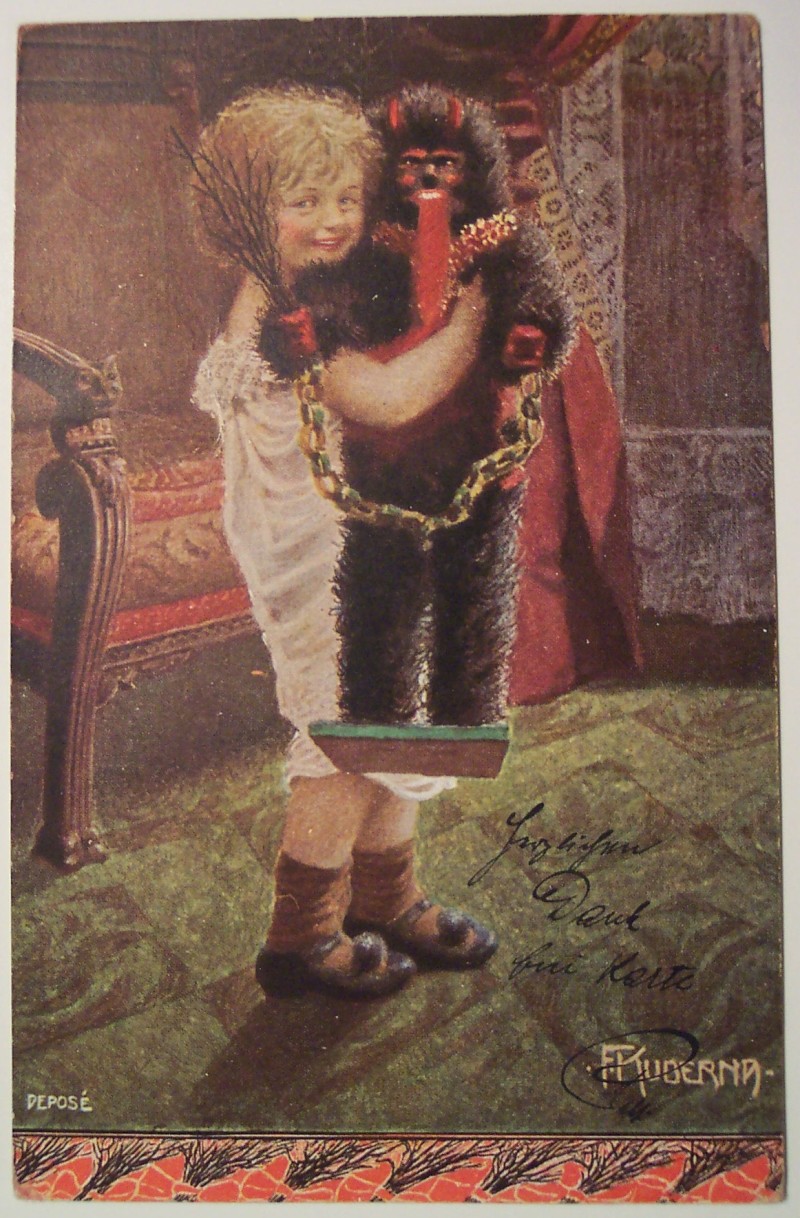The Case for Krampus
Christina Lee
 Good holiday stories need a villain. Ebenezer Scrooge, The Grinch, Hans Gruber. And of course, Krampus.
Good holiday stories need a villain. Ebenezer Scrooge, The Grinch, Hans Gruber. And of course, Krampus.
Krampus is having a moment—he’s acquired a Los Angeles fan club with a pretty spiffy web page, he’s been featured on the Colbert Report, and he’s even starring in a film. This half-goat-half-devil Austrian folk creature dates back, most believe, to Norse mythology. He’s St. Nicholas’ other half—he handles the kids who’ve been nicht so gut.
He’s horrific, yet Austrians seem to view him rather fondly. They send kitschy cards stamped with “Gruß Vom Krampus!" (Greetings from Krampus), and host Krampuslauf (Krampus runs) in which hoards of young men don devil-goat costumes and drunkenly run the streets on the eve of St. Nicholas’ visit.
It feels a bit goofy to ascribe deep symbolism to Krampus, a character dreamed up largely to terrify children into behaving. If we’re looking for meaning though, it seems obvious that Krampus and St. Nicholas act as foils—the evil preceding the good. As Mental Floss puts it, they form a “Christmassy Yin and Yang.” Krampus reminds us there is darkness as well as light in the holiday season.
North Americans generally prefer their holidays free of ancient goat devils. Our classic tales, even the really good ones (think Charlie Brown or Miracle on 34th Street) involve only one horror—a lack of the holiday spirit. (Die Hard, it should be noted, is a refreshing exception to this rule.)
I assumed the movie Krampus would be different, but in the film, Krampus is summoned when a boy loses faith in the season and tears up his letter to Santa. Our narrative, “be merry or die trying,” runs deep.
If you, like me, feel sick of this storyline, please consider as antidote this Youtube footage of an Austrian Krampuslauf. It’s pretty grim. I only made it three minutes in, right to the part where one of the thousand Krampuses rips a little child from his mother’s arms and hisses in his face. I was cowering in fear at my laptop screen, but the kid? The little dude smiles. Tough as nails. He was probably brought up on a steady diet of horrifying Bavarian folk tales.
Yes, the Krampuslauf seems awfully brutal for the holiday season. But there's a villain in the nativity story, too—Herod. And he isn’t stealing a roast beast or shouting “Bah Humbug.” He is committing infant genocide. Lurking right outside the glow of the manger is a madman, thirsting for power and control.
I’m not saying we all need to sub out our shiny family photo Christmas cards for Krampuskarten. But it is problematic to remove all darkness from every Christmas story we tell. That’s like editing John 1:5 down to just “The Light shines.” So what?
The holidays can seem like a very small light in a very dark world. Christmas comes in the midst of war, in the wake of tragedy, mass shootings, devastating personal loss, systemic injustice. “The light shines in the darkness, and the darkness has not overcome it.”
With that in mind, our obsession with cheer for cheer’s sake feels just as bizarre, and maybe more pointless, than any Krampuslauf.
So Merry Christmas. And "Gruß Vom Krampus," too.